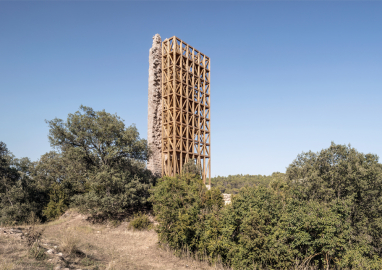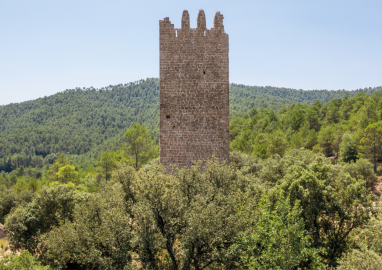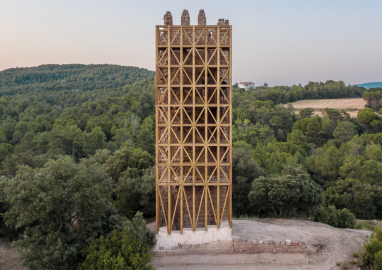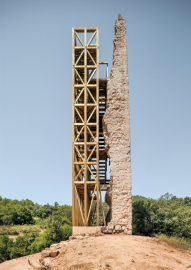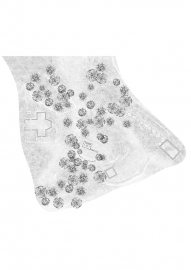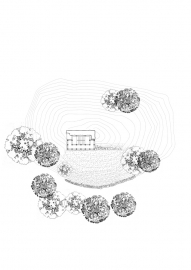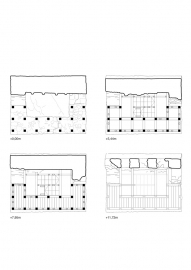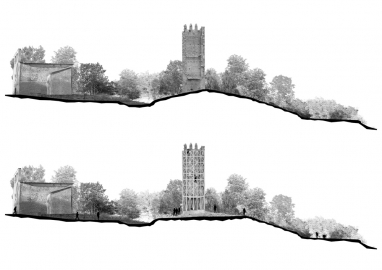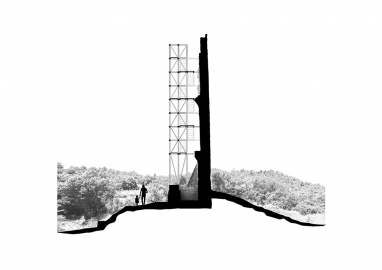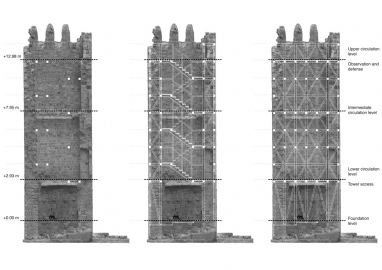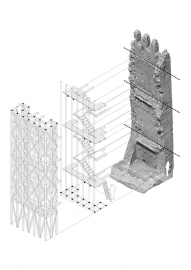Recovery of Merola's Tower
The project aims to recover the remainings of a defense tower from the thirteenth century with a new structure to preserve the heritage monument. This structure recovers the tower's volumetry and it's original function with a staircase that provides access to the levels of circulation and facilitates future maintenance.
In the south of the municipality of Puig-reig stand the remains of the heritage site of the castle of Merola, dating from the late thirteenth century. Due to the documented earth tremors that shook Catalonia in the 1500s, only one of the faces of the defense tower, originally with a rectangular plan of 5 x 3,8m and 14,8m height, is still standing. The detachment of a part of its coronation in 2016 puts Puig-reig Town Council on alert. The high risk of collapse, with the subsequent loss of the monument, called for an intervention to guarantee the preservation of the remains and recover the building for the village and as an attraction for visitors.
Two basic lines of intervention were adopted to meet the aims of preservation and use recovery of the tower: the consolidation of the surviving remains and the reinforcement of the medieval structure.
Once the remaining wall is consolidated, the insertion of a stairway between the old stone structure and the new timber one provides access to the three original levels of circulation and facilitates future maintenance of the monument. The ascent to the upper level of the tower recovers a point of view that had been inaccessible since the fifteenth century. The stones found in the archaeological excavation are reused to delimit the intervention and show the original demolition material.
The consolidation of the remains is realized with a lime mortar grouting of the entire canvas and the fixing of the ashlars without rebuilding any of the damaged parts. Once the fixation of the existing structure has been guaranteed, a reinforcement is proposed to stabilize the canvas and improve its behaviour in wind situation. Reinforcement takes the form of a timber structure comprising 18 sections of 14-cm square that follow the original perimeter of the stone wall. Like scaffolding, it structurally stabilizes the pre-existing construction and recovers the original volume. The missing foundation is recovered with lime concrete and the two structures are tied using wooden profiles anchored to the stone canvas at 14 points.
The new structure resolves the functional reinforcement conditions and establishes a dialogue with the pre-existing stone wall, evidencing the new intervention with respect to the original.

